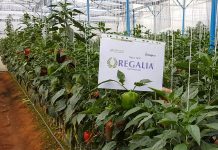Jim Lane
Like MSW? You’ll love bagasse. Lot of the advantages of waste, and there’s a lot more available.
![220px-Proserpine-Sugar-Mill-rail-tracks-1188[1].jpg](http://www.altenergystocks.com/wp-content/uploads/2017/08/220px_Proserpine_Sugar_Mill_rail_tracks_1188_1_.jpg) |
| Heaps of bagasse, covered with blue plastic, outside of a sugar mill in Proserpine, Queensland. Image via Wikipedia. |
Sugar’s the new oil, DOE Secretary Steven Chu is fond of saying. Codexis agrees, but argues that sugarcane residue (instead of competing for cane syrup) is the path to the real riches.
Petroleum – we all know what it is, but what does the word actually mean? It’s a mash-up from Latin and Greek. Petra+oleum. It means “rock-oil”.
What makes that etymology factoid significant is that, to find oil, you generally find the rock first. Unlocking the oil from the rock – that’s the magic from which all value flows.
Then, there’s bagasse.
So, as Steven Chu says, when the oil runs out, the sugar goes on.
You can extract sugar from a lot of things. Things that generally cost too much to begin with, or are in short supply (compared to the vast demand for oil), like corn starch, or wheat, or cellulosic wonderstuff.
Then, there’s bagasse. That leftover residue at the sugar mill after squeezing out all the cane juice.
Exciting enough that Cobalt recently signed an agreement with the 10th largest global chemical company, Rhodia, to pursue a fast track program to evaluate, design, and build 30,000 – 75,000 ton plants based on Cobalt Tech’s technology to transform South American bagasse into butanol.
Now, a lot of the excitement about Brazil has centered around the cane syrup, not the bagasse.
Pshaw, says Codexis [NASD:CDXS] CEO Alan Shaw.
The problem with the easy sugars
![codexis[1].gif](http://www.altenergystocks.com/wp-content/uploads/2017/08/codexis_1_.gif)
Shaw grabs a magic marker and begins to scribble out the equations on a white board in Redwood City. “It costs $275 a ton for the sugar,” as he pencils out the conversion from sugar carbohydrates to hydrocarbons, “and you lose up to 60 percent in the conversion. You need 3-5 tons of sugar to make a ton of diesel, once you have blown off all the oxygen. No one is going to pay more for your diesel because it is renewable. Acrylic acid, adipic acid – now there you have some good margin to work with. But not diesel fuel.”
Now, the spread between the cost of Southern pine and the cost of diesel fuel is pretty wide. Somewhere in the $70 per ton range compared to, say, $800 per ton for diesel fuel. So, there’s something to be said for gasification, so long as the hydrogen to carbon balance is optimal. But even there, Shaw sees problems.
“There’s nothing wrong with the OPEX [operational expenditures], with almost any of the advanced biofuel companies. It’s the CAPEX [capital expenditures].” He’s right, of course. Coming up with $200-$400 million checks for first of kind technologies, which usually means securing something on the order of $200-$350 million in project debt. Well, that’s proven to be a tall order for the early stage companies, by and large.
The winners, so far: low cost feedstock, capital
To date, the projects moving forward have had relatively strong loan guarantees (INEOS Bio, POET, Abengoa [ABGOY.PK]), or been backed by immense balance sheets (BP). The other projects getting through have featured zero-cost feedstock (e.g. Enerkem), are small demonstration projects mainly financed with government grants, or are conceived as low-cost bolt-ons to existing technology (e.g. steel mills, ethanol plants).
Zero-cost feedstock. Hmmm, we’ll come back to that.
A handful of cellulosic biofuels technologies are banking on a licensing model, and going no farther on their own balance sheet than demonstration scale. Some of those are engineering firms, like the Beta Renewables JV that is part owned by Italy’s giant engineering firm M&G through its Chemtex subsidiary.
The goal of the demonstration? To convince customers that the technology works, and to convince themselves to guarantee that technology will work. Knowing that any customer will demand a performance guarantee, and if they don’t, their bankers will.
Widening the window to success, narrowing the path to failure
But there’s something else. That’s broadening the conditions for success. These days, its not at all impossible – in fact it’s almost commonplace to design a technology at bench scale that achieves the rate, titer and yield needed to make cellulosic biofuels successful.
But there’s the problem of temperature. Distillation is at high temperature, by its nature, you are separating products by using differential boiling points. But enzymes, generally, don’t like those high temperatures. Narrowing that temperature differential saves energy – lots of it.
But its more than that. By widening the conditions at which cellulosic biofuels can succeed, it widens the range of choices for the engineers. Easier to use off-the-shelf parts, for example. Easier to tolerate conditions than have to design expensive work-arounds. Easier to have a hotter pre-treatment process.
That’s been a goal of the Chemtex-Codexis partnership – to broaden the conditions, as well as to create a library of enzymes that feature heightened rates of activities. So that enzymes not only work effectively in some narrow range that only a biologist could lovingly maintain, they work in the broad range suitable to massive fermenters with variable “weather conditions” inside.
Is Shell a possessive, or permissive, partner?
How does Shell view these activities from Codexis – don’t they have everything wrapped up in terms of biofuels that comes from the Codexis labs?
“It’s a question for our partners at Shell,” says Shaw. “But we know that their abiding interest is in developing the lowest opex and capex for their cellulosic biofuels business, and having a ‘most favored nation’ status with respect to the winning technology. A stronger Codexis means they are less likely to have to wait, and have more opportunities for wealth creation, no matter how we reach a solution that solves the problem, at scale.”
Next stop for the technology? Well, expect to see it in Brazil sooner than later. Sugarcane is 1/3 sugar, 1/3 bagasse and 1/3 tops and leaves, in round numbers. As mechanical harvesting brings the tops and leaves off the fields and into the mix, it can release the bagasse for higher value creation oppo
rtunities, than simply burning it to generate power, as happens today.
Given a 50-mile radius, says Shaw, there are opportunities for utilizing up to 60,000 metric tones of bagasse, per project, in the nearer term, and up to 100,000 MT in the future.
$600 billion, by the numbers
That bagasse is already paid for, aggregated at the mill. You can make $3 fuels or $6 chemicals from it, with feasible margins on either. Say, at 100 gallons per tonne. And there are more than a billion tonnes of bagasse available from the land that the Brazilian government has approved for cane cultivation. So, somewhere north of $600 billion in value, just in the bagasse.
Which is where the value really lies, says Shaw. The cane sugar, he says, is too exposed to the food markets and commodity speculation. But no one eats bagasse, and you need advanced technology to unlock the value. That’s a barrier to entry that preserves value, he says.
And right now, its an advanced technology that’s affordable priced.
The path less travelled: KiOR
![logo[1].png](http://www.altenergystocks.com/wp-content/uploads/2017/08/logo_1_.png)
Take KiOR [NASD:KIOR], for example, an outstanding technology using Southern pine to make cellulosic biofuels, at scale, at impressive margins. It’s $250 million per pop for a KiOR plant, the feedstock costs $72 per bone dry ton, and there are a couple of hundred million tonnes available. It’s a value proposition that has a lot of investors salivating. You get Haley Barbour and Vinod Khosla as your partners – not bad at all. Costs you $1.6 billion to own that seat at the “future of energy” table. You get about 1 percent of, say, Facebook, for that.
Compare Codexis. The feedstock is already paid for in the cane harvest, there are ultimately more than a billion tones available. You get Shell and M&G as your partners. Costs you $160 million to own that seat.
Now, KiOR’s model – build, own, operate, will control more of the value-chain, and more of the margin. But you could just about buy Codexis (at today’s “affordable” share prices) for the money that Khosla and friends pumped into Range Fuels. Now, that may well prove to be one of the most affordable seats at the Final Table in the World Biofuels Scale-Up Shootout that will ever come around. It’s what the US spends on oil imports in, say, a six-hour stretch.
Rewind to Apple 2002?
It’s Apple 2002 promise, at Apple 2002 prices. Now, can Alan Shaw and team pull it off? At Codexis, they think so – do you think so? We’ll continue to watch the space closely.
DISCLOSURE: The author has no positions in the stocks mentioned.
Jim Lane is editor and publisher of Biofuels Digest.








